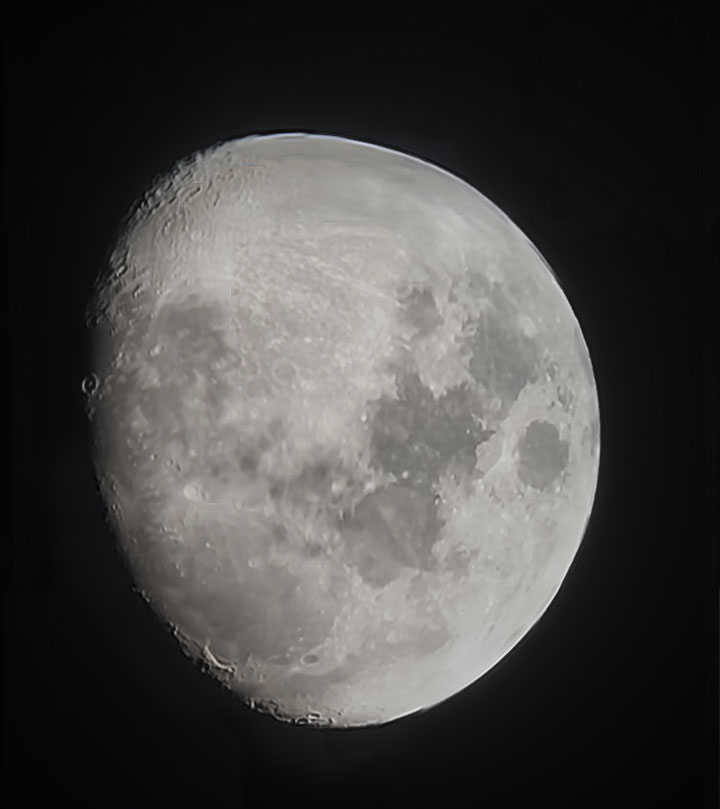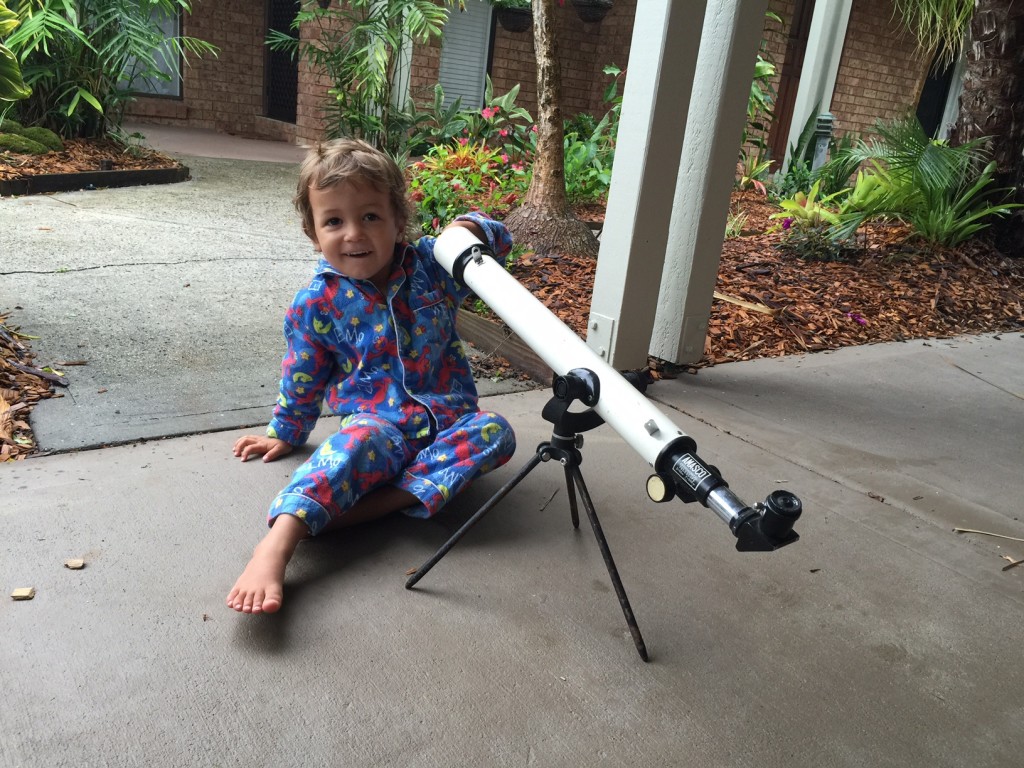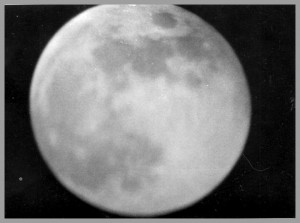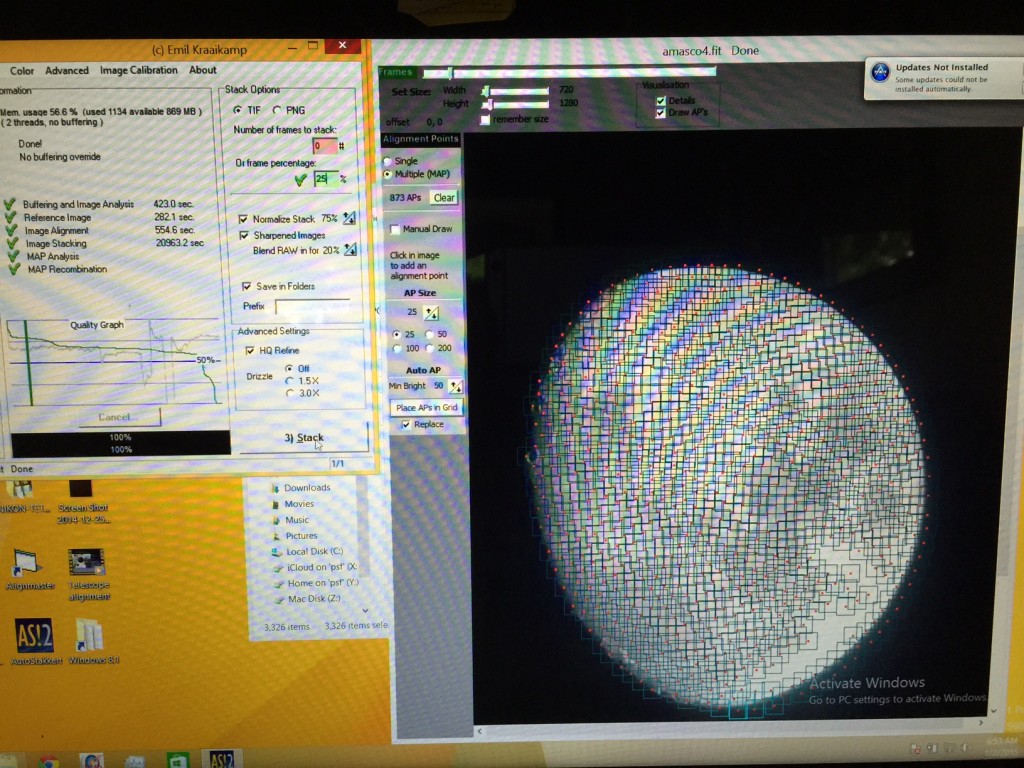



Astroimaging the Moon With a 1970s Childrens Telescope using 2015 Technology
 Download Full Resolution (809x809) 41KB
Download Full Resolution (809x809) 41KB
'Astroimaging the Moon With a 1970s Childrens Telescope using 2015 Technology'
Astroimaging the Moon With a 1970s Childrens Telescope using 2015 Technology
[Public Domain] 2 Jan 2015 Dylan O'Donnell
CATEGORY : Astrophotography
15,995 others viewed this post.
I recently found my childhood telescope, an “Amasco” 600mm refractor, stowed away in the attic. These were sold in Sydney in the 70s and 80s and made it’s way into my childhood bedroom when my father passed it onto me. I nearly fell off the ladder when I saw it, as I’ve been somewhat obsessed with astronomy over the last year. Finding the scope I saw Saturn’s rings, and Jupiters moons through for the first time held significant meaning for me, and I immediately passed the scope into my own son’s open arms and wide eyes.

After cleaning up the optics and verifying it was all working perfectly (physics hasn’t changed too much since the 70s) I wondered how far I could push the imaging capabilities with today’s technologies and techniques.
I took it outside and could view the entire moon well in the eyepiece, with clear crater definition brightness just as I remembered it. Sure, my modern binoculars and 9.25″ Celestron SCT (one of which also lives on the International Space Station) do a much better job, but all in all – the image was really great.
In the 70s and 80s if you wanted to take a photo you had to use a film camera, and there was no post-processing beyond developing the shot at the film lab. I google an example of what this would have looked like through a childhood scope like mine.
They looked a little like this :
The scope isn’t at fault here, but amateur astrophotography was still expensive and difficult to master. Simply holding a camera to the eye piece would have yielded an admirable, but wanting photo like this one.
So I decided to try the same in 2015, and headed to my front porch with the scope and an iPhone 6+.
There was no way to attach the camera at all, so I held the camera sensor to the eyepiece (called “digiscoping”) and tried to keep steady while I shot 3300+ frames using the slow motion 240fps video feature.
Then inside, I dumped those frames into AutoStakkert which analysed them. It is a “stacking” program which aligns, combines and sharpens all those frames into a single final image. Essentially, it takes the best percentage of them and uses the best details from those. It also averages out any ISO noise from the camera.
The end result isn’t an astrophotographer-of-the-year award winner but it’s (literally) decades ahead of the results you could achieve in the 70s and 80s. And using free software, and the ubiquitous phone camera in my pocket – both technologies that didn’t exist at the time. There was no functional equivalent to “stacking” digital exposures using film photography. Even if it were possible, the few minutes my computer took to stack the image would have taken days or weeks of 1970s computational processing time!
I could improve this image with a by throwing the scope onto a tracking mount, and properly attaching a CCD or DSLR camera, but I wanted to show what even a few minutes effort with today’s regular joe technology can yield with the same optical tube I used to look at the moon and dream with as a small boy in the 1980s.
 Download Full Resolution (809x809) 41KB
Download Full Resolution (809x809) 41KB






































